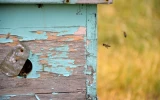What Time of Day Do Bees Swarm? (A Surprising Pattern)
A bee colony views swarming as a sign of strength that indicates a thriving population. Since there are so many bees, the colony must now split in half. But you don't want to lose those honey-producing bees. Knowing what time of day bees swarm is important.
Bees swarm during the day, typically from mid-morning until mid-afternoon, or from 10 am to 2 pm. If it is raining, they will not swarm and will resume once the weather improves. Swarms can also occur at 3 pm and between 4 and 5 pm when the temperature peaks at about 77 °F.
Honeybees swarm in a surprising pattern, and that’s why you may also notice swarms hiding in a tree when it’s raining. But do they survive? Let’s find out.
Summary
- Honeybees usually swarm when it's sunny, warm, and peaceful, and the temperature is around 77 °F.
- Bees can swarm before or after a rain, and they can withstand temperatures of 40 °F for as long as nine days outside the hive.
- Honeybees are diurnal, meaning most of their activities happen during the day, and so they don't normally swarm at night.
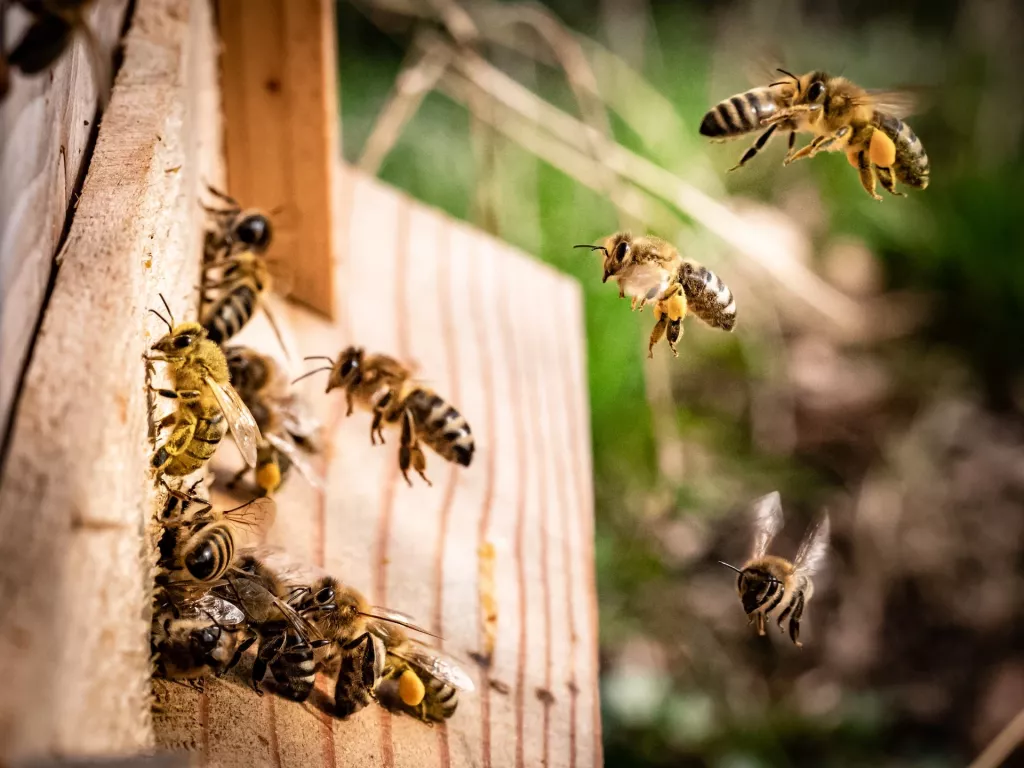
On this page:
What Time Of The Day Do Bees Swarm?
A swarm typically departs on a nice, sunny day, more often between mid-morning and mid-afternoon. The bees move when it's warm enough and not raining.
Bees typically don't swarm during a downpour, but they are more likely to do so when it's humid in the hours preceding a downpour. Sometimes, a swarm occurs right after a period of rain. The hive is so packed with young workers that many of them may have been lingering outside it for a few days before the rain. The conditions inside the hive are extremely cramped.
More swarms appear around midday. Some beekeepers receive swarm calls that most probably occurred in the morning. Bees can swarm at any time of day and in any weather, but the majority do so around midday.
Swarming often takes place during the warmer parts of the day with typical hours from 10 am to 2 pm. A sizable primary swarm may also take off just before removals at 3 pm. In the afternoons between 4 and 5 p.m., there may be succeeding swarms. At average, swarms occur at 10:00 am in a sunny, peaceful day.
On the day of the swarm, workers start adding honey from the cells to their honey crops. You may occasionally hear some bees buzzing and vibrating as they hurry through the congested frames as late morning approaches. The other bees start to agitate and get excited.
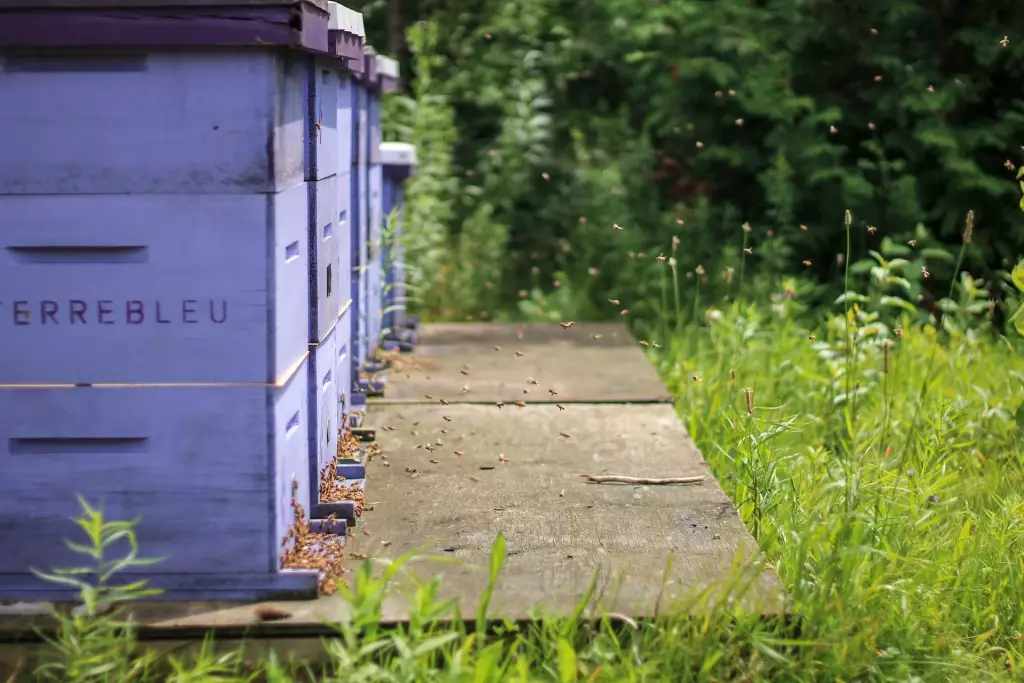
The bees start pouring out of the hive at the workers' signal, creating a huge, whirling mass of bees outside. There is audible evidence of this flying activity. The majority of the younger workers and the current queen are the bees who swarm out of the hive during the first or primary swarm. The excitement may encourage some drones to come along.
What Time Of Year Do Bees Swarm?
Late spring to mid-summer is when bee colonies swarm most frequently each year. The months of May through July are the most common swarm season. The temperature is suitable for mating flights at this time of year.
Swarm season typically occurs in the late spring, when bees multiply and seek out new locations to establish their colonies. During this time of year, thousands of bees searching for a new home will swarm, and you see them hovering above houses and trees.
Beekeepers theorize that it has to do with the warm weather in March, when the bees increase in population, which is followed by a brief period of cooler weather in April, and then another round of warm weather, which serves as the bees' cue to swarm.
Swarms happen in the spring, when flowers are blooming and there is a plentiful supply of pollen and nectar for honeybees. The abundance of food drives the bee population beyond the capacity of the hive, resulting in overcrowding. The worker bees are alerted, and so they need to make queen cells because the current queen is unable to control the growing colony.
By late spring, the primary swarming had already begun. You will notice a group of bees escaping from your apiary and landing on a neighboring tree branch.
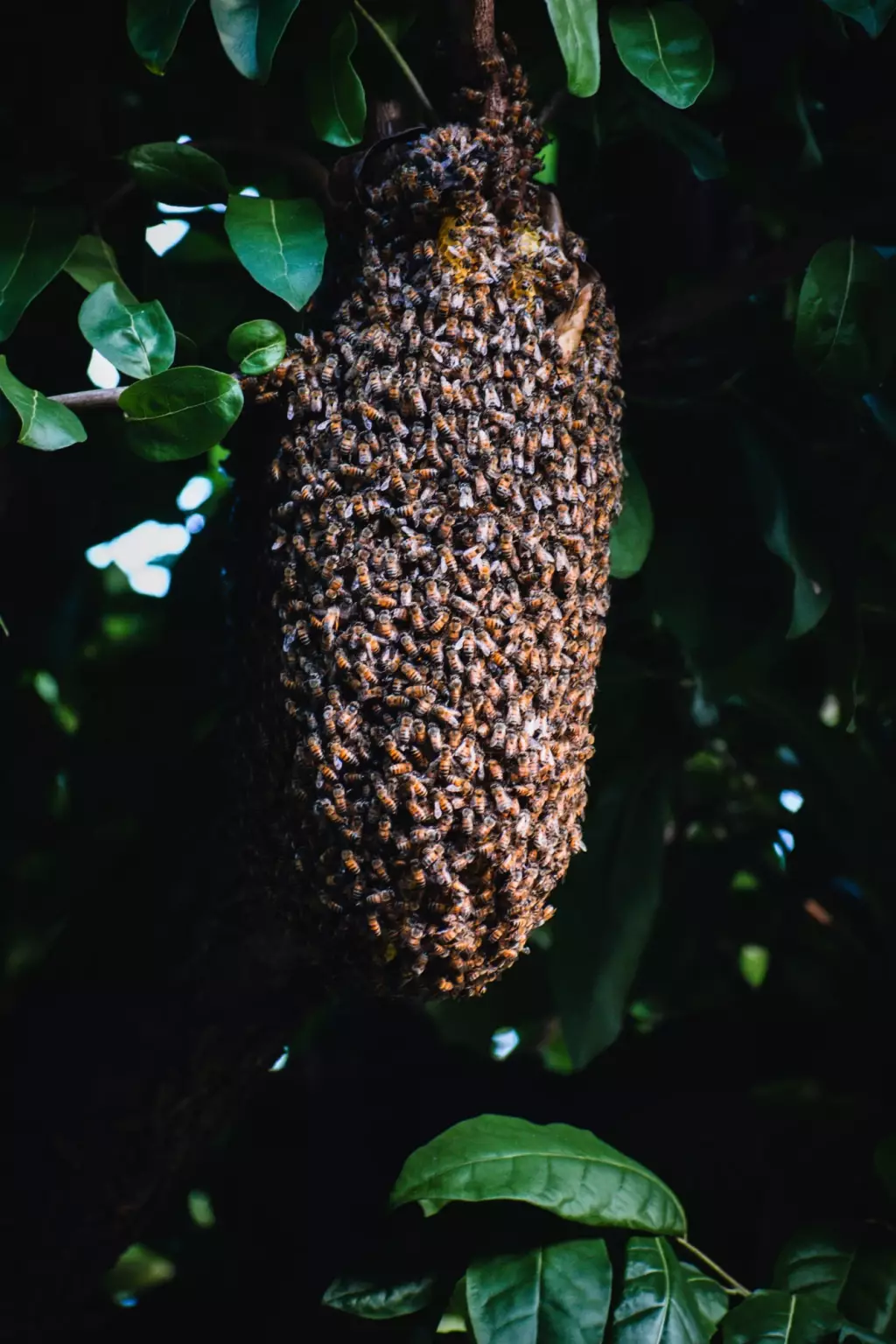
Secondary swarms, where a virgin queen bee guides another cluster of bees to a new location, can occasionally occur. These swarms will most likely struggle to live, since they don't have enough time to gather enough food for the oncoming winter.
Do Bees Swarm At Night?
Honeybees can fly at night if there is light, and they frequently do so. The bees will awaken and fly out to investigate a disturbance if an intense light is shone upon them.
Like all insects, bees have an innate tendency to fly toward bright lights in the dark. Honeybees, on the other hand, find it difficult to navigate on a typical, dark night and naturally choose to hang out at the hive.
Nighttime bee swarms are quite unusual. Honey bees are diurnal, which means they only forage actively during the day. The majority of bees are unable to fly at night. They can crawl, but that's probably not the most effective method for gathering nectar and for swarming.
Some bees choose to swarm at night because the nighttime brings moisture to parched locations, which the bees like. Furthermore, the cover of darkness helps bees avoid predators. A swarm may easily dodge potential hazards from birds and hornets if they can settle down before the sun comes up.
Even when they swarm at night, bees still require sleep. Honeybees need between five and eight hours of sleep each night. Their wings are closed, their antennae are fixed, and their bodies droop when they are sleeping.
Bees may be drawn to light from a porch or garden while they are swarming. As a beekeeper, you can use this as bait if you're trying to attract a swarm. During the swarming season, it would be a good idea for homeowners to switch off any lights outside their houses.
At What Temperature Do Bees Swarm?
The time of day might not be the best predictor for when bees swarm. The prevailing weather and temperature may be more reliable indicators of when bees decide to swarm.
A bee's capacity to fly peaks at about 77 °F. Their ability to fly is restricted by temperatures both higher and lower than that. Additionally, if it's below 59 °F, the bees' range of flight is limited to around 300 feet above the ground.
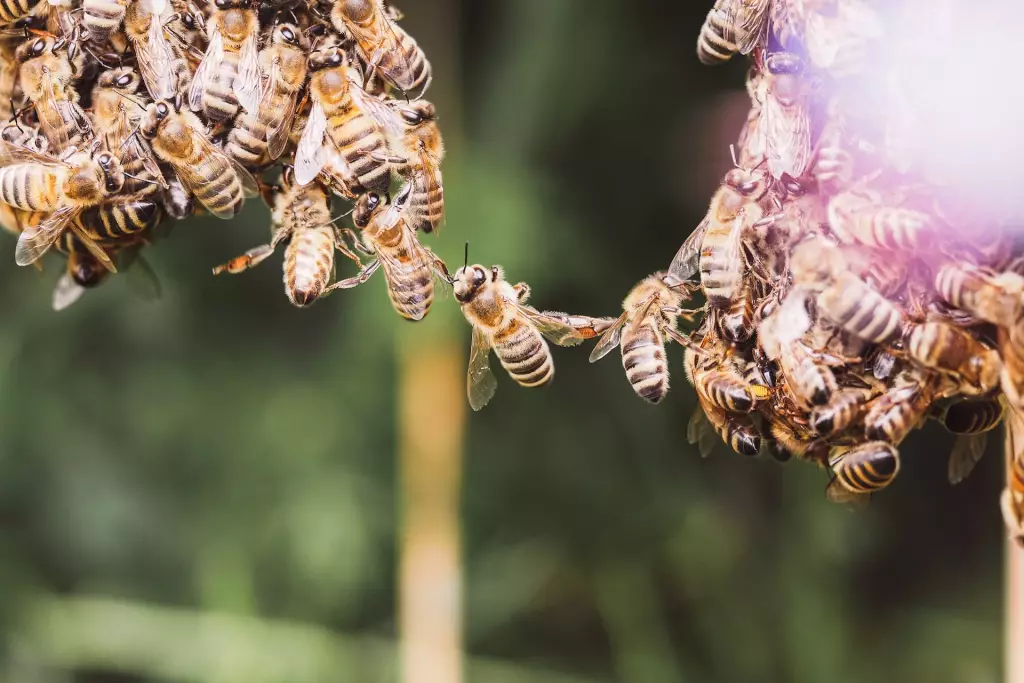
Bee swarms can occur at any time, depending on where you are and the local climate. But swarming bees do not prefer cool weather. Sometimes, swarming might be preceded by stormy weather and hot, muggy conditions. When the temperature and humidity rise, the colony swarms before it rains.
Do Bees Swarm In The Rain?
Bee swarms in the rain are not a common occurrence. Bees generally do not like rain. Rainy days present more challenging flying conditions.
If you see bee swarms when it's raining, they're doing fine. They can withstand rain, wind, and temperatures of 40 degrees for as long as nine days. On the first day of warmth, they'll probably leave.
A swarm has a mechanism for staying warm during bad weather. Bees from the cozy-warm center of the cluster emerge to cover the bees on the cluster's outer edges as they grow cold. More bees eventually emerge from the middle as the fresh outer layer becomes cold.
The swarm won't immediately disperse when the sun comes out. Bees must wait until everyone has dried off and is prepared for takeoff, since they cannot fly with wet wings.
